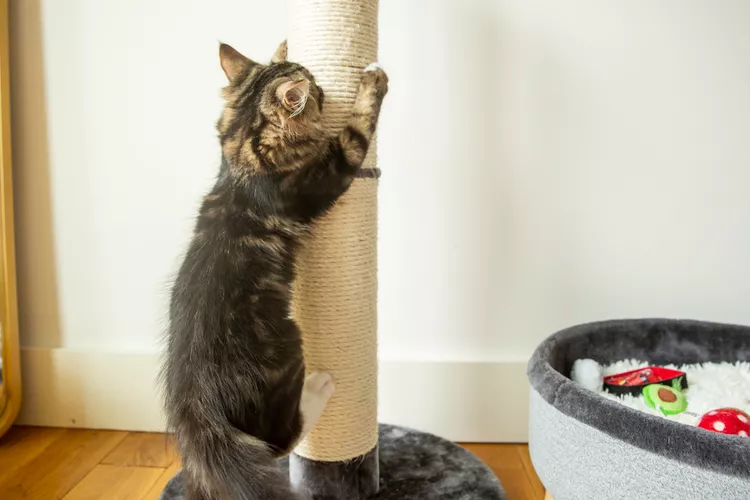
Cats don't scratch carpets out of spite or an instinct to destroy—scratching is a natural behavior for cats. Cats scratch things to care for their claws, mark surfaces, invite play, or attract attention, Most prefer to scratch surfaces that they can sink their claws into, like carpet, drapery, and upholstery—much to the dismay of cat owners.
It's important to stop your cat from scratching your carpet and other beloved possessions and direct the scratching to a better target so you can preserve your household furnishings (and your relationship with your cat).
Cats scratch by digging their front claws into a horizontal or vertical surface, then pulling their feet down or back. While this often damages the item being scratched, it provides a benefit to the cat. Scratching is an important part of a cat's health and well-being. There are a few reasons why cats scratch, and it all comes down to instinct.
The action of scratching, referred to as stropping, loosens and removes the outer layers of the claw to reveal a sharp new surface underneath. You may find these nail layers around your home, especially in areas where your cat likes to scratch. Claw sharpening is an act of grooming for the cat.
Scratching also exercises the muscles of the forelimbs and spine to keep the cat in top shape for hunting. Some cats will scratch by lying down and pulling their body weight along the floor. The surfaces they choose to scratch are usually fixed and nonyielding to provide resistance against the muscles they use to scratch.
Scratching is also used as a form of communication or marking behavior. The scent and sweat glands on the feet mix together and produce a unique smell. When claws are scraped down a surface, they leave behind marks, scents, and claw husks. Other cats can see and smell this like a message.
Outdoor cats may leave evidence of scratching on trees, fence posts, sheds, and wooden gates. It's no coincidence that these are all areas that are highly visible to other outdoor cats. Such scratching is a territorial behavior used to communicate with other cats and mark boundaries.
Indoor cats tend to find similar surfaces indoors to serve their instinct to scratch, often targeting softwoods, carpets, and fabric-covered furnishings.
In some cases, scratching is a precursor to play, either with another cat in the home or with human companions. It may also be a bid for attention. If a cat is routinely shooed or chased away when it scratches furniture or carpeting, it may come to associate scratching with receiving attention.
Your first option for preventing damage from scratching is to direct your cat's behavior to an acceptable target. Kitty furniture such as scratching posts are designed for that exact purpose.
What do you do if your cat refuses to use the scratching post or sometimes chooses to ignore it in favor of your carpeting? The best solution is to provide scratching surfaces that are more desirable to your cat than your furnishings.
Add a horizontal scratching pad. Cats have their own individual scratching patterns and preferences. Those who scratch carpeting may be more inclined to scratch horizontally than use a vertical scratching post. Fortunately, there are scratching pads made for horizontal scratching; some are wedge-shaped inclines and others are flattened out. Experiment to find one that your cat likes.
Add multiple scratching posts and pads, covered with different materials and different textures. The choice of different scratching options may relieve your cat of its need to sharpen its claws on your carpet. Many scratching posts are covered with carpet, but you should add one or two with a different material, such as sisal, corrugated cardboard, or even plain wood. Remember that cats like varying surface angles for scratching, ranging between horizontal and vertical. So ideally, provide at least one of each: a tall vertical scratching post, a flat scratching mat, and an inclined scratcher. Make sure scratching posts are heavy and sturdy so they remain fixed in place while your cat scratches them.
Cover up the spot where your cat scratches. If possible, move a piece of furniture (or a scratching post) to your cat's favorite carpet spot. A sisal scratching post may be a good choice here. For scratching that takes place in front of an entryway, cover the area with a thin mat. Two-sided tape can act as a deterrent and eventually train your cat to avoid the area, especially on vertical surfaces.
Infuse the area with scent. Use a feline pheromone plug-in or a spray like Feliway in the area where your cat has been scratching. Although these types of products aren't marketed specifically for this purpose, cat behaviorists have found that the "friendly pheromones" in these products can fool cats into believing the area has already been "marked" by another cat, often discouraging scratching behavior.
Consider your cat's anxiety level. A cat may resort to more frequent scratching if it's emotionally stressed, such as when it feels threatened by environmental changes or a new pet (or a new child) has recently become a part of the household. Paying more attention to your cat, including playing with it more often, may offer the reassurance it needs to give up its carpet-scratching habits.
While you're working on methods to stop your cat's carpet scratching, you'll want to minimize the damage to your home in the meantime. Trim your cat's claws regularly, using a sharp claw-trimming tool. This will help keep the damage to a minimum.
You may also wish to try a product like nail caps. These should only be applied to cats that allow you to handle and manipulate their paws. If you've never used nail caps before, many veterinarians and most large pet supply stores offer installation and training for a small fee. Your cat probably won't mind them, and they'll prevent the shredding-type of damage your cat sometimes inflicts on your rugs.
Edited by Jenna Stregowski, RVT

Exploring the Different Types of Pet-Friendly Beaches
Are you looking for pet-friendly beaches? Learn about the different types of pet-friendly beaches, their locations, and tips for visiting them with your pet.
Exploring Pet-Friendly Wineries: Types, Locations, and More
Discover the different types of pet-friendly wineries, where to find them, and what to expect when you visit. Learn more with The Spruce Pets.
Why Is My Dog’s Eye Swollen?
If your dog's eye is swollen, she may need veterinary attention. The inflammation could be caused by allergies, an injury, or even a tumor.
Can Dogs Eat Corn on the Cob?
Dogs love chewing on corn cobs, but this can cause serious harm. Learn about the dangers of corn cobs and find out what to do if your dog eats one.
Can Dogs Eat Papaya? What to Know About Sharing This Tropical Fruit With Your Pup
Papaya is safe for dogs in moderation, and it can even provide some nutritional value for them. However, too much can cause digestive upset, and it's not suitable to share with dogs with certain health conditions.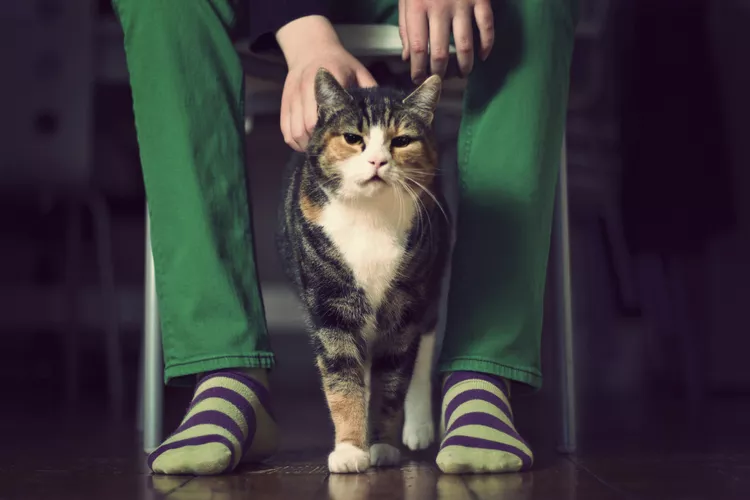
65 Irish Cat Names
Irish cat names can pay homage to historical places, local cuisine, famous Irish actors and musicians, or other wonderful aspects of the Emerald Isle.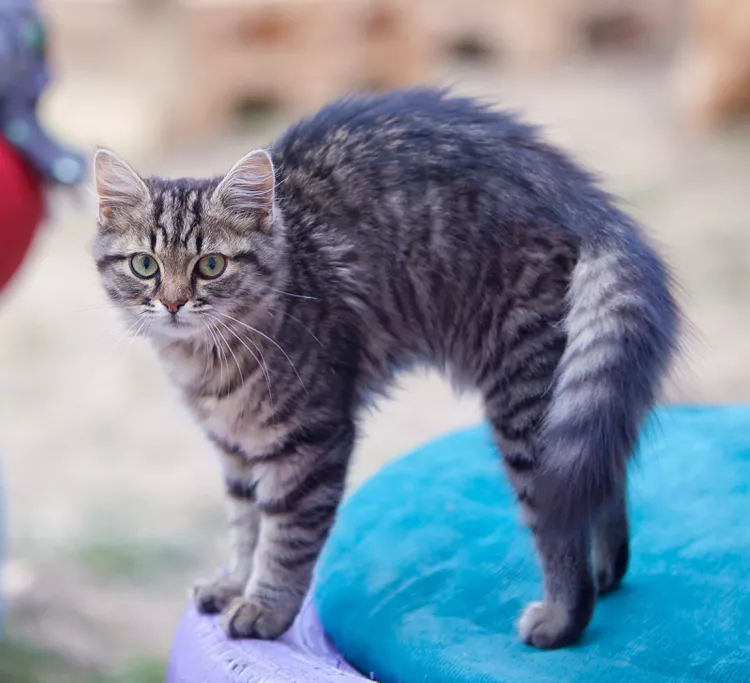
Feline Hyperesthesia Syndrome (FHS) in Cats
Rippling skin is more than dermal sensitivity in cats. It can be a sign of Feline Hyperesthesia Syndrome. Learn the causes, treatment, and prevention.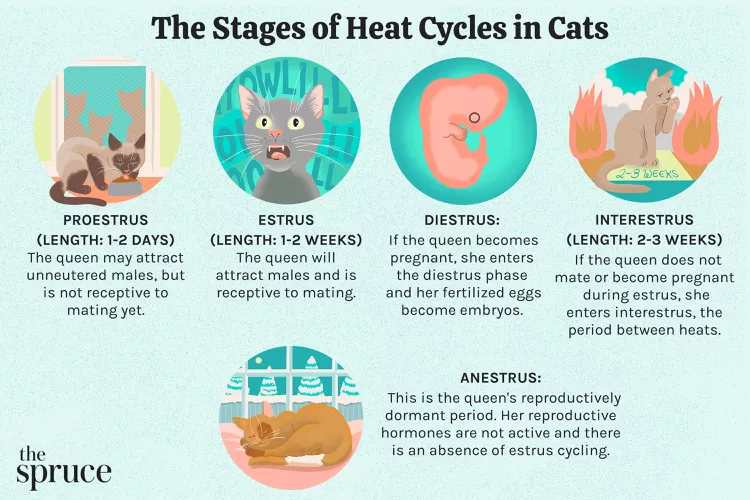
How Long Are Cats in Heat?
How long are cats in heat? Learn about the heat cycles of cats, also called estrus, as well as the reasons you should spay your cat.
Can Dogs Eat Raw Chicken Feet?
What are the potential health benefits of chicken feet for dogs? What are the risks?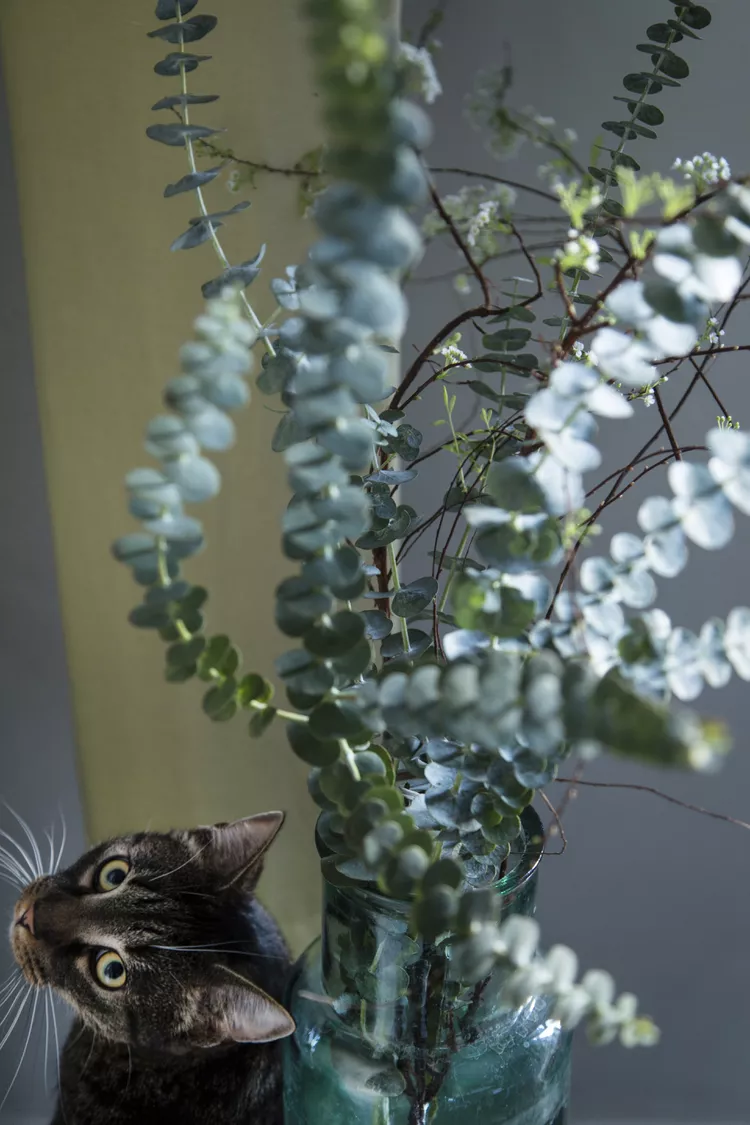
Is Eucalyptus Safe for Cats?
Many products containing eucalyptus are not safe for cats, and it is important to be aware of the risks to your cat.
What You Need to Know About Homemade Cat Food
If you want to cook for your cat, make sure to read about the risks associated with homemade diets for cats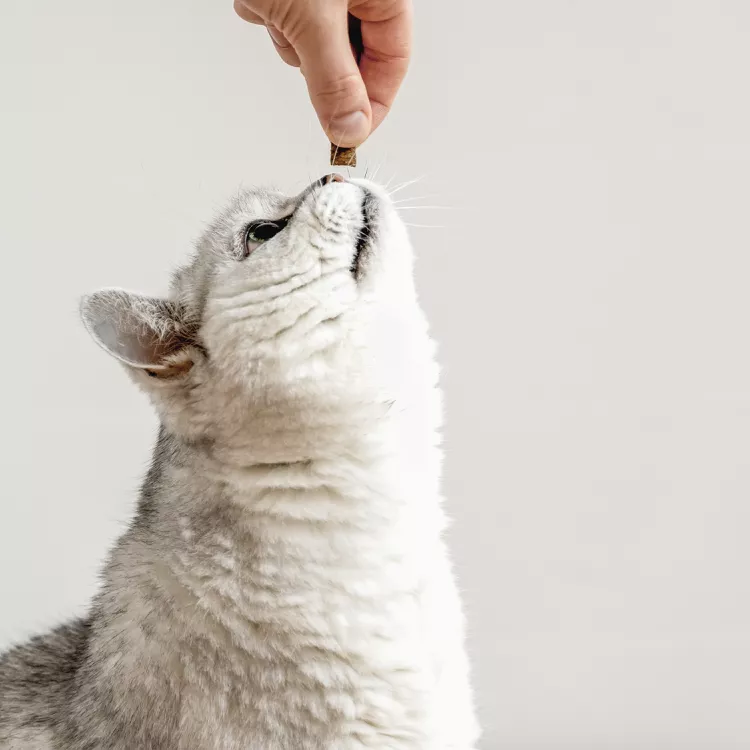
Can Cats Eat Peanut Butter?
Peanut butter is not toxic to cats, but it might not be the best choice of treat for them.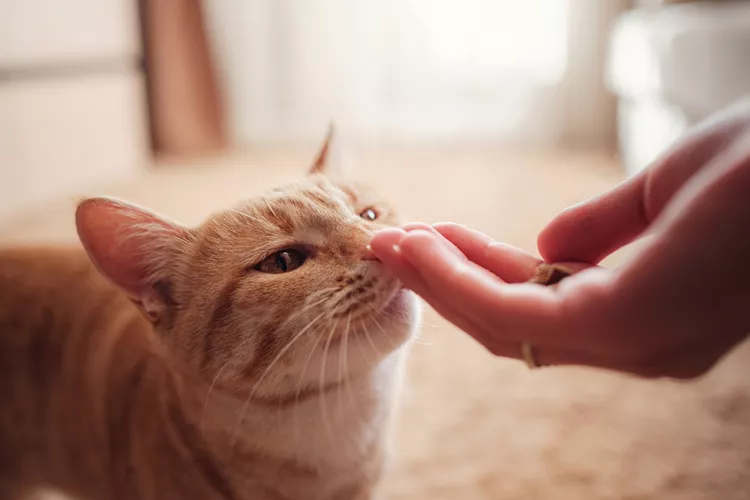
Can Cats Eat Cheese?
Can cats eat cheese? Is it healthy for them? How much can they eat and what should you do if you fear your cat has eaten too much cheese?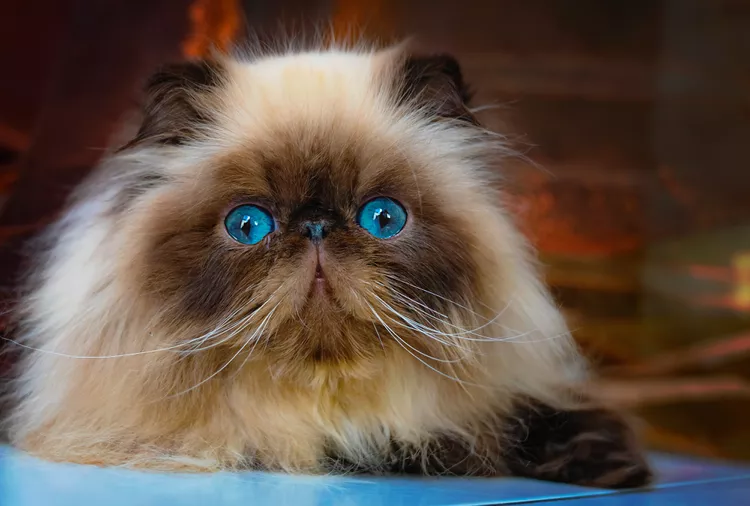
8 Flat-Faced Cats with the Cutest Smooshed Faces
These flat-faced cat breeds have a distinct and adorable appearance. Learn about their origins and traits, and the potential health risks tied to their unique facial structures.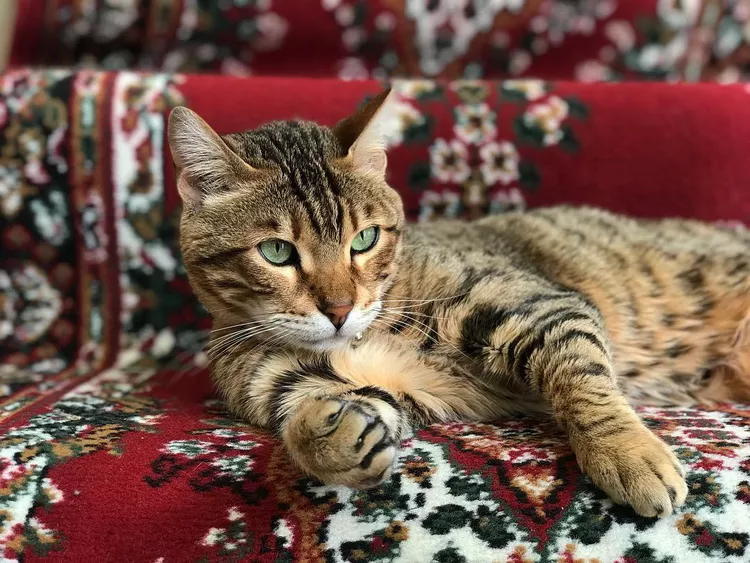
Pictures and Facts About Bengal Cats and Kittens
Bengal cats are a cross between wild cats and domestic cats. Learn more about what they look like and pictures of this beautiful spotted breed.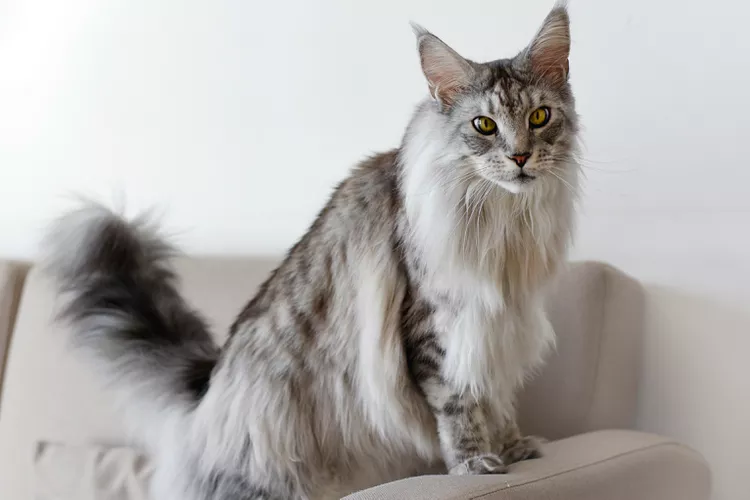
Top 10 Big House Cats
Larger cat breeds, like Maine coons and savannahs, deserve just as much love as their petite counterparts. These big house cats tip the scales.
Cairn Terrier: Dog Breed Characteristics & Care
The cairn terrier is a spunky, affectionate, and intelligent dog from Scotland. The breed became famous when one played Toto in The Wizard of Oz. Learn about the temperament, history, health, and care needs of the cairn terrier dog breed.
Reasons Why Dogs Grind Their Teeth
Some dogs grind their teeth. Learn why dogs grind their teeth and if it can be harmful. Find out what to do about teeth grinding in dogs.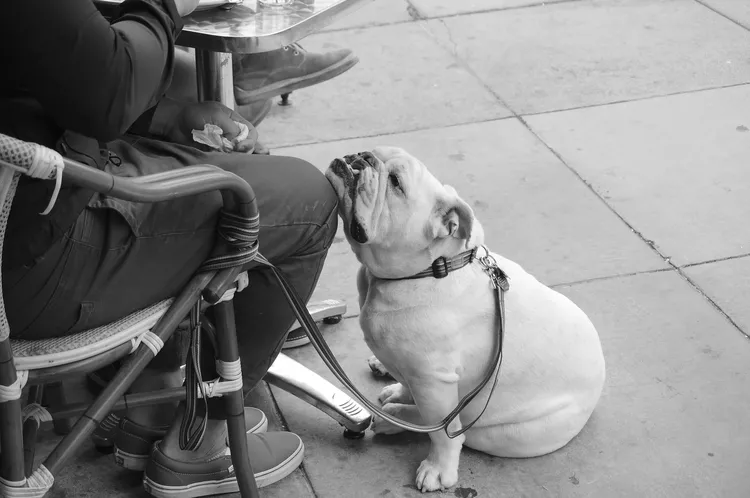
This Is Why Some Dogs Lean on People
Certain dogs really love leaning on their humans. What does this mean? Find out why dogs lean on people and if this is ever a problem.
Can Dogs Get Depression? How to Help Your Sad Dog
Can dogs get depression? Learn about the signs of depression in dogs and find out how to help your sad dog.